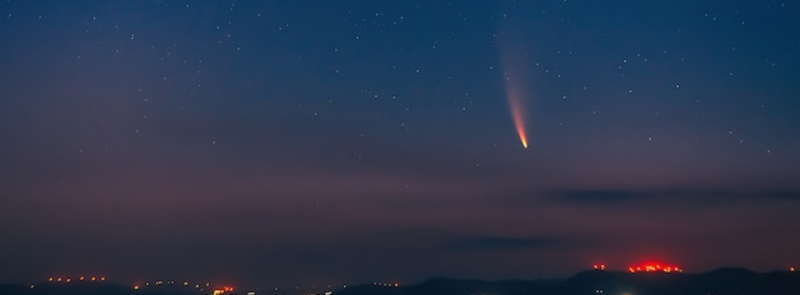
When It Occurs
Every June 30th
Timeline
Days Passed (867)
# Hashtags
#NationalMeteorWatchDay #ShootingStars
National Meteor Watch Day, celebrated on June 30 in the United States, encourages people to go outside, look up at the night sky, and watch for shooting stars or meteors. It's a day dedicated to stargazing and appreciating the beauty of meteor showers, as well as learning more about meteors and their impact on astronomy.
What Is a Meteor?
A meteor is a small piece of debris from space, often part of a comet or asteroid, that enters Earth's atmosphere at high speeds. When it enters the atmosphere, the friction causes it to heat up and emit light, creating what we see as a shooting star or meteor. If the meteor reaches Earth's surface, it is called a meteorite.
History of National Meteor Watch Day
The National Meteor Watch Day likely arose from a shared fascination with meteor showers and the broader field of astronomy. The day encourages people to become more aware of celestial events and the natural beauty of space.
Famous Meteor Showers
While June 30 doesn’t coincide with any major meteor showers, there are plenty of notable showers throughout the year. Some of the most famous meteor showers include:
-
Perseids (July-August): One of the most popular and visible meteor showers, the Perseids peak in mid-August. They are associated with the comet Swift-Tuttle.
-
Geminids (December): The Geminids are another prominent meteor shower, known for producing bright, multi-colored meteors in mid-December.
-
Lyrids (April): This annual meteor shower peaks around April 22 and is linked to the comet C/1861 G1 Thatcher.
-
Quadrantids (January): These meteors peak in early January and are known for their bright fireballs.
How to Celebrate National Meteor Watch Day
-
Plan a Meteor Watching Party: Organize a get-together with friends and family for a night of stargazing. Bring along blankets, chairs, and perhaps some snacks, and spend the evening watching for meteors in the night sky.
-
Find a Dark Spot: The best place to watch for meteors is in an area with low light pollution. National parks, rural areas, or even the outskirts of a city can provide ideal viewing conditions.
-
Learn More About Meteors: Take the opportunity to learn more about meteors, meteor showers, and space science. Many astronomy websites and apps provide real-time information on meteor activity and upcoming meteor showers.
-
Join a Local Astronomy Group: Many local astronomy clubs or organizations host stargazing events during meteor showers or on National Meteor Watch Day. This is a great way to learn more about astronomy and get expert guidance on where to look for meteors.
-
Capture a Meteor on Camera: For photographers, capturing a meteor can be challenging but rewarding. Set up a camera with a long exposure to increase the chances of catching a meteor streaking across the sky.
Fun Facts About Meteors
-
Meteors Are Also Called "Shooting Stars": Though commonly referred to as shooting stars, meteors are not stars at all. They are small space rocks or debris that burn up in Earth's atmosphere.
-
Meteor Showers Are Named After Constellations: Meteor showers are often named after the constellation from which they appear to radiate. For example, the Perseids are named after the constellation Perseus.
-
Speed of a Meteor: Meteors travel extremely fast — sometimes up to 25,000 miles per hour (40,000 kilometers per hour) or more when entering Earth's atmosphere.
-
Meteorites: Not all meteors burn up completely in the atmosphere. If a meteor reaches the Earth’s surface, it is called a meteorite. Some meteorites are billions of years old and provide valuable information about the solar system.
-
Famous Meteor Impacts: Some large meteorites have made significant impacts on Earth, such as the one that created the Barringer Crater in Arizona and the meteor believed to have contributed to the extinction of the dinosaurs.
Conclusion
National Meteor Watch Day offers a perfect opportunity to connect with nature and the universe beyond our planet. Whether you're an avid astronomer or just someone who enjoys gazing up at the stars, June 30 is a night to appreciate the wonder of meteors and perhaps catch a glimpse of one of the spectacular shooting stars streaking across the sky.


